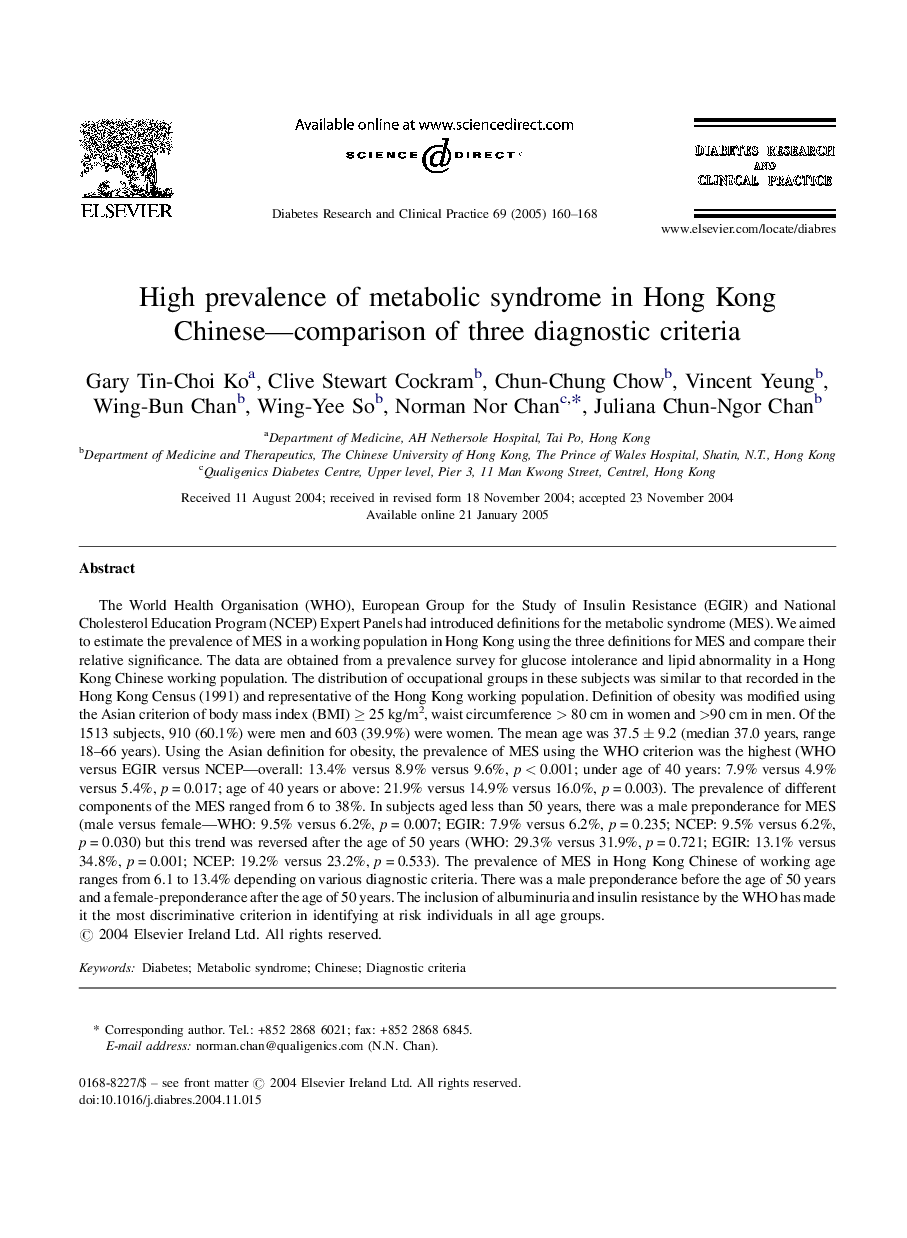| Article ID | Journal | Published Year | Pages | File Type |
|---|---|---|---|---|
| 9112108 | Diabetes Research and Clinical Practice | 2005 | 9 Pages |
Abstract
The World Health Organisation (WHO), European Group for the Study of Insulin Resistance (EGIR) and National Cholesterol Education Program (NCEP) Expert Panels had introduced definitions for the metabolic syndrome (MES). We aimed to estimate the prevalence of MES in a working population in Hong Kong using the three definitions for MES and compare their relative significance. The data are obtained from a prevalence survey for glucose intolerance and lipid abnormality in a Hong Kong Chinese working population. The distribution of occupational groups in these subjects was similar to that recorded in the Hong Kong Census (1991) and representative of the Hong Kong working population. Definition of obesity was modified using the Asian criterion of body mass index (BMI) â¥Â 25 kg/m2, waist circumference > 80 cm in women and >90 cm in men. Of the 1513 subjects, 910 (60.1%) were men and 603 (39.9%) were women. The mean age was 37.5 ± 9.2 (median 37.0 years, range 18-66 years). Using the Asian definition for obesity, the prevalence of MES using the WHO criterion was the highest (WHO versus EGIR versus NCEP-overall: 13.4% versus 8.9% versus 9.6%, p < 0.001; under age of 40 years: 7.9% versus 4.9% versus 5.4%, p = 0.017; age of 40 years or above: 21.9% versus 14.9% versus 16.0%, p = 0.003). The prevalence of different components of the MES ranged from 6 to 38%. In subjects aged less than 50 years, there was a male preponderance for MES (male versus female-WHO: 9.5% versus 6.2%, p = 0.007; EGIR: 7.9% versus 6.2%, p = 0.235; NCEP: 9.5% versus 6.2%, p = 0.030) but this trend was reversed after the age of 50 years (WHO: 29.3% versus 31.9%, p = 0.721; EGIR: 13.1% versus 34.8%, p = 0.001; NCEP: 19.2% versus 23.2%, p = 0.533). The prevalence of MES in Hong Kong Chinese of working age ranges from 6.1 to 13.4% depending on various diagnostic criteria. There was a male preponderance before the age of 50 years and a female-preponderance after the age of 50 years. The inclusion of albuminuria and insulin resistance by the WHO has made it the most discriminative criterion in identifying at risk individuals in all age groups.
Related Topics
Life Sciences
Biochemistry, Genetics and Molecular Biology
Endocrinology
Authors
Gary Tin-Choi Ko, Clive Stewart Cockram, Chun-Chung Chow, Vincent Yeung, Wing-Bun Chan, Wing-Yee So, Norman Nor Chan, Juliana Chun-Ngor Chan,
